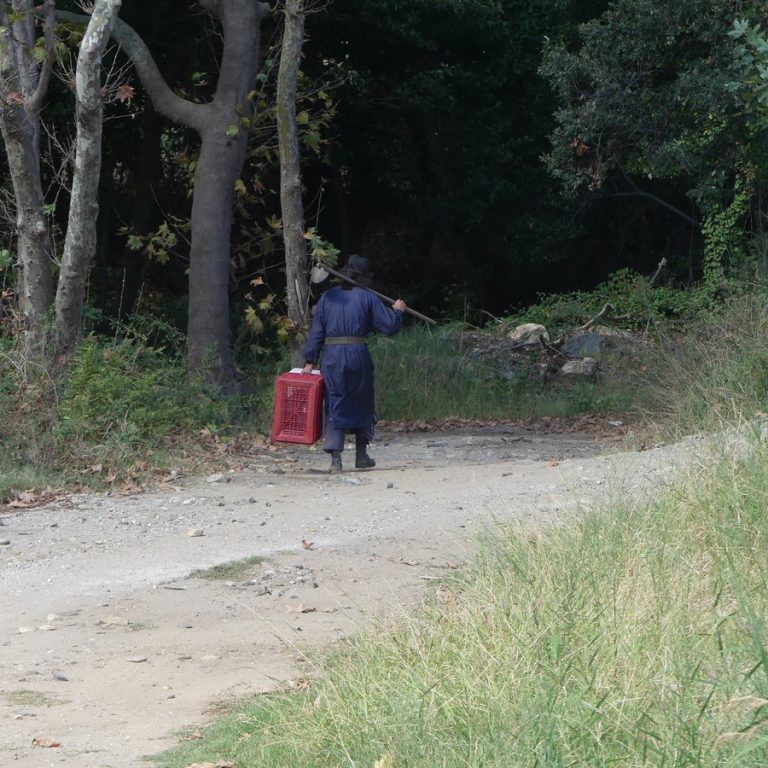From Independence To The End Of The Idiorhythmic Period
On 2 November 1912, after 488 years of foreign rule, humiliation, and a variety of 'adventures', Agios Oros was liberated by the Greek army, in an atmosphere of general euphoria and festive celebrations by the Athonites. From that time on, all the Athonite monasteries linked their historical fate with that of the Hellenic state.
In 1922, in the aftermath of the Asia Minor Catastrophe, the Monastery paid its own price in blood: The monk Joseph, Treasurer of the dependency of St Nikolaos of Kydonieos, was martyred by the Turks. At the same time, the income-producing activities in the Monastery's dependencies in Macedonia, Thasos and Limnos were decreased since their focus was shifted to meet the needs of the many refugees arriving in the country.
The problems faced by the Monastery during the decades which followed were compounded by a huge fire on 1 December 1948, which totally destroyed the eastern wing. The fire would have caused even more damage had it not been stopped by a miracle which took place after the monks had prayed for help to a small copy of the miraculous icon of Panagia Gerontissa. Because of the miracle, the small icon was afterwards referred to by the monks as Panagia Purosotiera) 'Virgin Mary the Saviour from Fires'.
At that point in time, the idiorhythmic system of organization coupled with the shortage of monks, conditions which were generally the norm for all the Athonite monasteries in the post-war period, made the operation of the Monastery even more difficult. This unfortunate situation prevailed until May 1992, when the Monastery once again began to operate as a cenobitic system. The last Prior of the idiorhythmic-system Monastery was the hieromonk Euthymios Prepis from Magoulades, Corfu.
In 1922, in the aftermath of the Asia Minor Catastrophe, the Monastery paid its own price in blood: The monk Joseph, Treasurer of the dependency of St Nikolaos of Kydonieos, was martyred by the Turks. At the same time, the income-producing activities in the Monastery's dependencies in Macedonia, Thasos and Limnos were decreased since their focus was shifted to meet the needs of the many refugees arriving in the country.
The problems faced by the Monastery during the decades which followed were compounded by a huge fire on 1 December 1948, which totally destroyed the eastern wing. The fire would have caused even more damage had it not been stopped by a miracle which took place after the monks had prayed for help to a small copy of the miraculous icon of Panagia Gerontissa. Because of the miracle, the small icon was afterwards referred to by the monks as Panagia Purosotiera) 'Virgin Mary the Saviour from Fires'.
At that point in time, the idiorhythmic system of organization coupled with the shortage of monks, conditions which were generally the norm for all the Athonite monasteries in the post-war period, made the operation of the Monastery even more difficult. This unfortunate situation prevailed until May 1992, when the Monastery once again began to operate as a cenobitic system. The last Prior of the idiorhythmic-system Monastery was the hieromonk Euthymios Prepis from Magoulades, Corfu.

